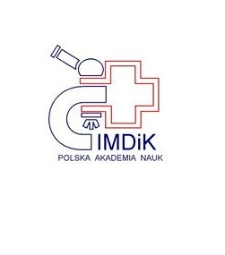- Search in all Repository
- Literature and maps
- Archeology
- Mills database
- Natural sciences
Advanced search
Advanced search
Advanced search
Advanced search
Advanced search

Object
Title: Neuropathological syndromes in the course of full blown acquired immune deficiency syndrome (AIDS) in adults in Poland (1987-1995)
Creator:
Mossakowski, Mirosław Jan (1929–2001) ; Zelman, Irmina Barbara (1927–2010)
Date issued/created:
Resource type:
Subtitle:
Zespoły neuropatologiczne w oun w przebiegu pełnoobjawowego AIDS u dorosłych w Polsce (1987-1995)
Publisher:
Place of publishing:
Type of object:
Abstract:
Morphological analysis of the brains from 100 cases of full blown AIDS patients observed in the course of 1987-1995 years was performed. The material comprised 96 males, 3 females and 1 infant, 11 months old. Early material consisted almost exclusively of homo- and bisexuals, while in the last years heterosexual drug addicts prevailed. Gross brain examination revealed focal changes in 25% of cases, most of them being connected either with opportunistic infections or primary proliferating malignancies. Brain atrophy with an evident regional differences was observed macroscopically in 35 cases. Microscopic examination allowed detection of pathological changes in the brains of 87 cases, although in there maining 13 cases there occurred some slight abnormalities taking the form of non-specific neuronal degeneration andloss, considered as resulting from perimortal cardio-pulmonary insufficiency or bleeding. Specific HIV-related changes in the form of HIV-encephalitis, HIV-encephalopathy or coexistence of both and HIV-leptomeningitis as well as HIV-vasculitis were present in 35 cases. They were accompanied by HIV-associated changes (vacuolar myelopathy, vacuolar leukoencephalopathy and selective poliodystrophy). Very seldom they appearedas independent pathological features and were characterized by very low frequency. Opportunistic infections composed the largest group of 59 cases. Proliferative malignancies occurred altogether in eleven cases, 10 of which were primary and secondary brain lymphomas. One case of Kaposi sarcoma completed the neoplastic series. Sixteen cases revealed various types of brain pathology such as hepatogenic encephalopathy, traumatic cortical scars, central pontinemyelinolysis etc. The 59 cases of opportunistic infections consisted of a wide spectrum of viral and bacterial as well as fungal and protozoan infections. Among viral infections cytomegalovirus encephalitis was the most common, way ahead the progressive multifocal leukoencephalopathy. The second in frequency among opportunistic infections was brain toxoplasmosis and some fungal infections such as cryptococcosis and aspergillosis. Bacterial infections were in factlimited to tuberculosis, taking the form of granulomatous leptomeningitis with severe vascular pathology and/or tuberculoma formation. Many pathological processes appearing in a single case was characteristic feature of our collection. There was coexistence of HIV-specific CNS pathology and opportunistic infections, malignant neoplastic growth and other types of pathology. Various opportunistic infections coexisted without HIV-specific changes as well as malignant proliferation with opportunistic infections. Similarities and differences of our series were compared with data characterizing other, earlier collections of NeuroAIDS.
Relation:
Volume:
Issue:
Start page:
End page:
Detailed Resource Type:
Format:
Resource Identifier:
Language:
Language of abstract:
Rights:
Creative Commons Attribution BY 4.0 license
Terms of use:
Copyright-protected material. [CC BY 4.0] May be used within the scope specified in Creative Commons Attribution BY 4.0 license, full text available at: ; -
Digitizing institution:
Mossakowski Medical Research Institute PAS
Original in:
Library of the Mossakowski Medical Research Institute PAS
Projects co-financed by:
Access:
Object collections:
- Digital Repository of Scientific Institutes > Partners' collections > Mossakowski Medical Research Institute PAS > Publications of the Institute employees
- Digital Repository of Scientific Institutes > Literature > Journals/Articles
Last modified:
Feb 1, 2022
In our library since:
May 30, 2019
Number of object content downloads / hits:
150
All available object's versions:
https://rcin.org.pl./publication/94276
Show description in RDF format:
Show description in RDFa format:
Show description in OAI-PMH format:
Objects Similar
Zelman, Irmina Barbara (1927–2010) Mossakowski, Mirosław Jan (1929–2001)
Mossakowski, Mirosław Jan (1929–2001)
Mossakowski, Mirosław Jan (1929–2001)
Mossakowski, Mirosław Jan (1929–2001)
Mossakowski, Mirosław Jan (1929–2001)
Mossakowski, Mirosław Jan (1929–2001)
Mossakowski, Mirosław Jan (1929–2001)
Mossakowski, Mirosław Jan (1929–2001)

 INSTYTUT ARCHEOLOGII I ETNOLOGII POLSKIEJ AKADEMII NAUK
INSTYTUT ARCHEOLOGII I ETNOLOGII POLSKIEJ AKADEMII NAUK
 INSTYTUT BADAŃ LITERACKICH POLSKIEJ AKADEMII NAUK
INSTYTUT BADAŃ LITERACKICH POLSKIEJ AKADEMII NAUK
 INSTYTUT BADAWCZY LEŚNICTWA
INSTYTUT BADAWCZY LEŚNICTWA
 INSTYTUT BIOLOGII DOŚWIADCZALNEJ IM. MARCELEGO NENCKIEGO POLSKIEJ AKADEMII NAUK
INSTYTUT BIOLOGII DOŚWIADCZALNEJ IM. MARCELEGO NENCKIEGO POLSKIEJ AKADEMII NAUK
 INSTYTUT BIOLOGII SSAKÓW POLSKIEJ AKADEMII NAUK
INSTYTUT BIOLOGII SSAKÓW POLSKIEJ AKADEMII NAUK
 INSTYTUT CHEMII FIZYCZNEJ PAN
INSTYTUT CHEMII FIZYCZNEJ PAN
 INSTYTUT CHEMII ORGANICZNEJ PAN
INSTYTUT CHEMII ORGANICZNEJ PAN
 INSTYTUT FILOZOFII I SOCJOLOGII PAN
INSTYTUT FILOZOFII I SOCJOLOGII PAN
 INSTYTUT GEOGRAFII I PRZESTRZENNEGO ZAGOSPODAROWANIA PAN
INSTYTUT GEOGRAFII I PRZESTRZENNEGO ZAGOSPODAROWANIA PAN
 INSTYTUT HISTORII im. TADEUSZA MANTEUFFLA POLSKIEJ AKADEMII NAUK
INSTYTUT HISTORII im. TADEUSZA MANTEUFFLA POLSKIEJ AKADEMII NAUK
 INSTYTUT JĘZYKA POLSKIEGO POLSKIEJ AKADEMII NAUK
INSTYTUT JĘZYKA POLSKIEGO POLSKIEJ AKADEMII NAUK
 INSTYTUT MATEMATYCZNY PAN
INSTYTUT MATEMATYCZNY PAN
 INSTYTUT MEDYCYNY DOŚWIADCZALNEJ I KLINICZNEJ IM.MIROSŁAWA MOSSAKOWSKIEGO POLSKIEJ AKADEMII NAUK
INSTYTUT MEDYCYNY DOŚWIADCZALNEJ I KLINICZNEJ IM.MIROSŁAWA MOSSAKOWSKIEGO POLSKIEJ AKADEMII NAUK
 INSTYTUT PODSTAWOWYCH PROBLEMÓW TECHNIKI PAN
INSTYTUT PODSTAWOWYCH PROBLEMÓW TECHNIKI PAN
 INSTYTUT SLAWISTYKI PAN
INSTYTUT SLAWISTYKI PAN
 SIEĆ BADAWCZA ŁUKASIEWICZ - INSTYTUT TECHNOLOGII MATERIAŁÓW ELEKTRONICZNYCH
SIEĆ BADAWCZA ŁUKASIEWICZ - INSTYTUT TECHNOLOGII MATERIAŁÓW ELEKTRONICZNYCH
 MUZEUM I INSTYTUT ZOOLOGII POLSKIEJ AKADEMII NAUK
MUZEUM I INSTYTUT ZOOLOGII POLSKIEJ AKADEMII NAUK
 INSTYTUT BADAŃ SYSTEMOWYCH PAN
INSTYTUT BADAŃ SYSTEMOWYCH PAN
 INSTYTUT BOTANIKI IM. WŁADYSŁAWA SZAFERA POLSKIEJ AKADEMII NAUK
INSTYTUT BOTANIKI IM. WŁADYSŁAWA SZAFERA POLSKIEJ AKADEMII NAUK


































